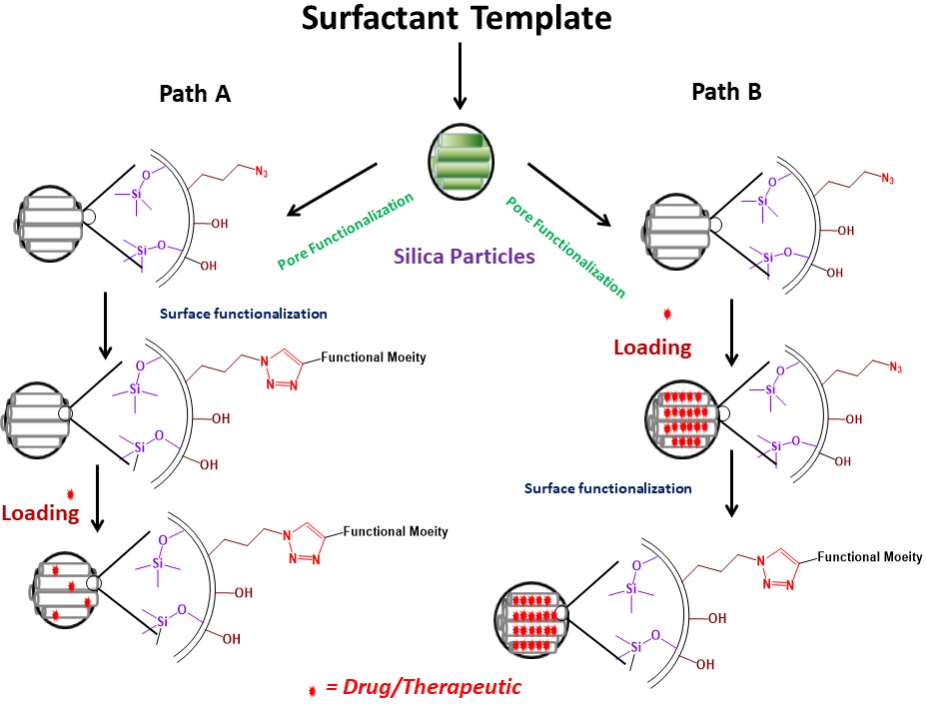Indian researchers have developed silica nanoparticles with pores tuned to absorb hydrophobic drugs with more stable surfaces and effective absorption properties that can improve drug delivery systems.
Drug delivery systems (DDS) are new-age tools aimed to solve the problems of conventional therapy. With the advent of drug delivery systems, it is now possible to deliver a therapeutic agent at a specific site in the body where it is needed at the exact dose required. This is expected to avoid the side effects of systemic high drug dose that is generally administered. Surface functionalized mesoporous silica nanoparticles (MSN) are widely used DDS as they have porous structure (pore sizes can be varied from 2 nm to 20 nm). However, the current routes adopted to complete the surface functionalization of the outer surface first and then load the drug leads to much lower drug loading as the pores get closed by the molecules used for outer surface functionalization.
In a recent paper published in ‘Particle & Particle. System Characterization’ by researchers from Centre for Nano and Soft Matter Sciences, Bengaluru, an autonomous institute of the Department of Science & Technology, Govt. of India and the National Chemical Laboratory (CSIR-NCL), Pune transformed MSNs to an amphifunctional system containing hydrophobic pores and hydrophilic surface functionalization. The hydrophobic pores enable the loading of hydrophobic drugs into the pores (as hydrophobic surfaces attract hydrophobic substances) and hydrophilic outer surfaces that make the MSNs more stable under physiological conditions. They used a technique called selective chemical functionalization strategies to bring about this modification.
The researchers found that the size of outer surface modifications/coatings adversely impact the total amount of drug that can be loaded and released. Presence of bulkier surface groups hinders the access of drugs to hydrophobic pockets of particles.
To counter this, an alternate sequence of drug loading and surface functionalization was employed where the drug was loaded first into the pores, and then the surface functionalization (fixing the gate) was carried out. This was seen to result in higher drug loading capacity and improves functioning of DDS.
The team expects that the findings of these studies would prove useful as guiding principles to design better drug delivery systems.

Figure: Methods of drug loading into surface functionalized mesoporous silica nanoparticles: Path A; Carrying out the surface functionalization first and then drug loading (this is the conventional path); Path B: Loading the drug first and then carrying out the surface functionalization (current method). The drug loading was always found to be higher when Path B was followed.
Publication link: https://doi.org/10.1002/ppsc.202100185
For more details, Dr. B L V Prasad, Email: pl[dot]bhagavatula[at]cens[dot]res[dot]in can be contacted.






























